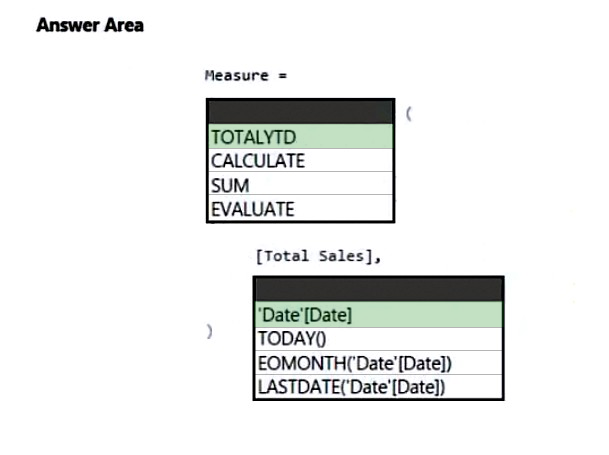

HOTSPOT -
You have a Power BI report that contains a measure named Total Sales.
You need to create a new measure that will return the sum of Total Sales for a year up to a selected date.
How should you complete the DAX expression? To answer, select the appropriate options in the answer area.
NOTE: Each correct selection is worth one point.
Hot Area:

lukelin08
Highly Voted 2 years, 6 months agoLeeTheRed
1 year, 4 months agoOrkhannnn
Highly Voted 2 years, 5 months agojaume
Most Recent 5 months agorcaliandro
8 months agoJudT
1 year agoIgetmyrole
1 year, 7 months agoShalaleh
1 year, 11 months agoLambdaBld
2 years agoajvela
1 year, 12 months agoNemesizz
1 year, 11 months agoRazaTheLegend
2 years agovysh07
2 years, 1 month ago814145c
6 days, 9 hours ago1sourabhpatel1
2 years, 1 month agojsking
2 years, 3 months agoPatrick666
2 years, 4 months agoiccent2
2 years, 4 months ago